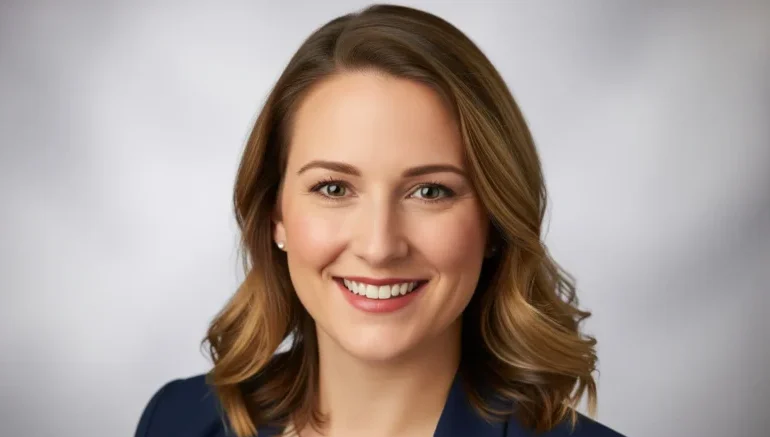
Good vs Bad Headshots and How to Improve Your Photo Effectively
There are good vs bad headshots, and they are more than just photos, they represent you, your brand, and how others see you. If for professional profiles, social media, or personal branding, a good headshot makes a strong impression. So, what separates good vs bad headshots? The difference comes down to lighting, composition, expression, and overall presentation.
A strong headshot speaks before you do. It conveys confidence, approachability, and professionalism, helping you connect with your audience right away. On the other hand, a poorly executed headshot can send the wrong message, making you appear unprofessional or unprepared. Investing time in getting a well-crafted headshot is necessary for anyone looking to make a lasting impact.
Many people assume any photo of their face will work, but knowing the good and bad headshot differences makes all the difference. Small details like the right lighting, a natural expression, and a clean background can right away improve a headshot. By understand these elements and avoiding common mistakes, you can create a photo that truly shows the best version of yourself.
Defining a Good Headshot
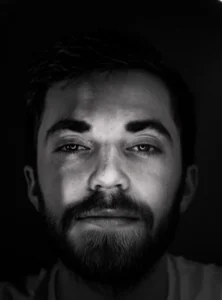 Understand the good and bad headshot differences helps you create a photo that feels natural and polished. A good headshot shows the best version of yourself without looking fake or overly edited. Soft lighting, a clean background, and a well-framed face all contribute, while a relaxed, natural expression makes the photo feels authentic rather than forced or overly serious. When comparing good vs bad headshots, bad ones have many issues that make them look less professional. Harsh lighting, awkward angles, or stiff expressions can ruin the photo. Some may appear too posed, while others feel rushed or poorly planned. A bad headshot fails to bring out the best in a person, making them seem unapproachable or unnatural.
Understand the good and bad headshot differences helps you create a photo that feels natural and polished. A good headshot shows the best version of yourself without looking fake or overly edited. Soft lighting, a clean background, and a well-framed face all contribute, while a relaxed, natural expression makes the photo feels authentic rather than forced or overly serious. When comparing good vs bad headshots, bad ones have many issues that make them look less professional. Harsh lighting, awkward angles, or stiff expressions can ruin the photo. Some may appear too posed, while others feel rushed or poorly planned. A bad headshot fails to bring out the best in a person, making them seem unapproachable or unnatural.
The best headshots create a balance between professionalism and personality. They show confidence without looking too rigid, and they make the subject look friendly without overdoing the smile. Simple changes in lighting, expression, and posture can turn an average headshot into a very strong one. Paying attention to small details, like proper grooming and clean clothes, can also make a very big difference in how the final image looks.
Importance of Proper Lighting
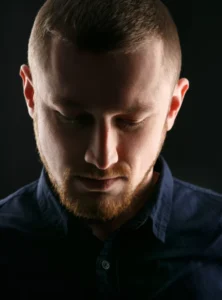 Lighting is one of the most important parts of a headshot. Soft, even lighting makes skin look smoother and reduces harsh shadows. It brings out facial features in a way that looks natural and clean. Good lighting also helps create a warm and friendly look, making the photo much more appealing.
Lighting is one of the most important parts of a headshot. Soft, even lighting makes skin look smoother and reduces harsh shadows. It brings out facial features in a way that looks natural and clean. Good lighting also helps create a warm and friendly look, making the photo much more appealing.
Bad lighting can completely ruin a headshot. If the light is too harsh, it creates very strong shadows, making the face look uneven. If the light is too dim, the photo looks dull and lifeless. Overhead lighting can make the eyes look tired, while side lighting can create shadows that make the face look unbalanced.
To get the best lighting, it is a good idea to take photos near a soft light source, like a window with indirect sunlight. A professional studio light can also help create a smooth, natural effect. The goal is to make the subject look fresh and fine ell-lit without making the lighting too strong or too weak. Avoid using lights that are too radiant as they can wash out the skin and remove natural depth from the face. The right lighting should highlight the best features without making the photo look artificial.
Avoiding Clutter in the Background
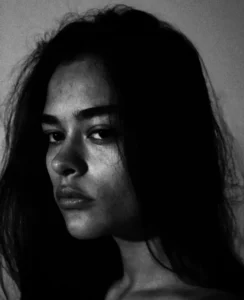 A great background makes a headshot look professional and polished. Simple, clean backgrounds work best because they keep the focus on the person. A solid color, a softly blurred outdoor setting, or a neutral office background can all create a very strong image.
A great background makes a headshot look professional and polished. Simple, clean backgrounds work best because they keep the focus on the person. A solid color, a softly blurred outdoor setting, or a neutral office background can all create a very strong image.
One key aspect when comparing good vs bad headshots is the background. Bad headshots often have messy or distracting backgrounds. Too many objects, radiant colors, or busy patterns can pull attention away from the subject. A cluttered background makes the photo feel unorganized and less professional, while a clean, simple backdrop keeps the focus on the person.
When looking at good vs bad headshots, choosing a simple background makes a big difference. A clean wall, softly blurred natural scene, or neutral-colored office works well. The key is keeping the subject clear, with no distractions pulling attention away. Balanced composition helps the person look natural in the frame, and placing them slightly off-center often creates a more engaging headshot.
Snapping Emotional Authenticity
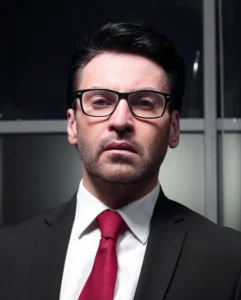 A great headshot should feel natural, and expression plays a big role in that. A relaxed, confident face with a gentle smile or a focused gaze looks very inviting. The best expressions come from genuine emotions, making the person look more relatable and professional.
A great headshot should feel natural, and expression plays a big role in that. A relaxed, confident face with a gentle smile or a focused gaze looks very inviting. The best expressions come from genuine emotions, making the person look more relatable and professional.
A bad expression can easily ruin an otherwise good headshot. A smile that looks forced or too wide can make the person look uncomfortable. A very serious or blank face can make them look distant. If the eyes do not match the rest of the expression, the headshot may feel fake or lifeless.
To get a natural expression, it helps to think of something positive or have a conversation while taking the photo. A good trick is to breathe in and out slowly before the photo is taken. This helps relax the face and creates a more natural look that feels very real. Taking multiple shots with slight variations in expression can also help find the best and most natural look. Avoid overthinking the pose, as this can create stiffness in the face.
Creating Visual Balance
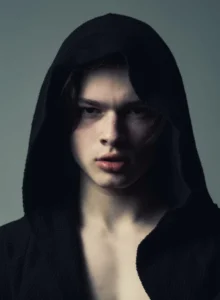 How a person stands or sits in a headshot makes a very big difference. A natural and relaxed posture makes the subject look confident and approachable. A small tilt of the head or a slight angle of the shoulders can add more depth to the image. These little details make the headshot look very polished.
How a person stands or sits in a headshot makes a very big difference. A natural and relaxed posture makes the subject look confident and approachable. A small tilt of the head or a slight angle of the shoulders can add more depth to the image. These little details make the headshot look very polished.
Bad posture makes a headshot look awkward. If the shoulders are too high or stiff, the person can seem very tense. If the posture is too slouched, they might appear lazy or uninterested. Overly dramatic poses can also look forced, taking away from the natural feel of the photo.
The best way to get good posture is to stay relaxed and make small movements. Rolling the shoulders back slightly, tilting the head just a bit, or adjusting the chin can create a very strong and natural look. It is also helpful to take a deep breath before posing to release any stiffness. Standing or sitting with a straight back, but without being too rigid, makes a very big difference. Keeping the arms and hands in a comfortable position also helps maintain a relaxed look.
The Role of Posture and Body Language
 Body language plays a big role in how a headshot is perceived. A confident pose, such as a straight back and relaxed shoulders, makes a person look more confident. Small movements, like a slight turn of the head or a natural placement of hands, can add to the professional feel of the image.
Body language plays a big role in how a headshot is perceived. A confident pose, such as a straight back and relaxed shoulders, makes a person look more confident. Small movements, like a slight turn of the head or a natural placement of hands, can add to the professional feel of the image.
Bad body language can make a headshot look weak or unprofessional. Slouching, crossing arms tightly, or tilting the head too much can create a nervous or stiff appearance. An awkward pose can distract from the overall message of the photo. Bad body language can make a headshot look weak or unprofessional. Slouching, crossing arms tightly, or tilting the head too much can create a nervous or stiff appearance.
To get the best body language, it helps to practice in front of a mirror or take test shots. Relaxing the shoulders, keeping a gentle yet confident gaze, and making sure the body feels natural are key to a strong headshot. Avoid forcing a pose that does not feel right, as natural movements will always look better on camera. Small adjustments can make a big difference.
What Makes a Headshot Appear Amateurish
 A headshot can go from professional to amateurish with just a few mistakes. Poor lighting, bad expressions, distracting backgrounds, and stiff poses can all make the photo look unpolished. Even minor details like messy hair or unfit clothing can affect the final result. The right balance of lighting, expression, and composition is what makes a headshot truly stand out. One common mistake is using too much editing. Over-retouching can make skin look unnatural, removing the personal touch from the photo. Another mistake is ignoring small details like posture or stray hair, which can make the image look rushed. Poor lighting can also create harsh shadows or uneven tones, making the headshot less professional.
A headshot can go from professional to amateurish with just a few mistakes. Poor lighting, bad expressions, distracting backgrounds, and stiff poses can all make the photo look unpolished. Even minor details like messy hair or unfit clothing can affect the final result. The right balance of lighting, expression, and composition is what makes a headshot truly stand out. One common mistake is using too much editing. Over-retouching can make skin look unnatural, removing the personal touch from the photo. Another mistake is ignoring small details like posture or stray hair, which can make the image look rushed. Poor lighting can also create harsh shadows or uneven tones, making the headshot less professional.
Conclusion
A good headshot feels natural, balanced, and professional. The lighting is soft, the expression is real, the posture is relaxed, and the background is simple. When all of these things come together, the result is a very strong and polished image that makes a great first impression.
When comparing good vs bad headshots, bad ones often feel forced, stiff, or unbalanced. Harsh lighting, fake expressions, poor posture, and messy backgrounds all reduce the photo’s quality. Even small mistakes can make a headshot look unprofessional, making it less effective.
The easiest way to improve a headshot is to focus on the basics: good lighting, a clean background, and a natural pose. By making these small changes, anyone can get a headshot that looks very polished and professional without feeling too staged or artificial. Regular practice and small adjustments can make a big difference in getting the best possible result.
Read Next: How to Spot the Difference Between AI and Manual Photo Edits





